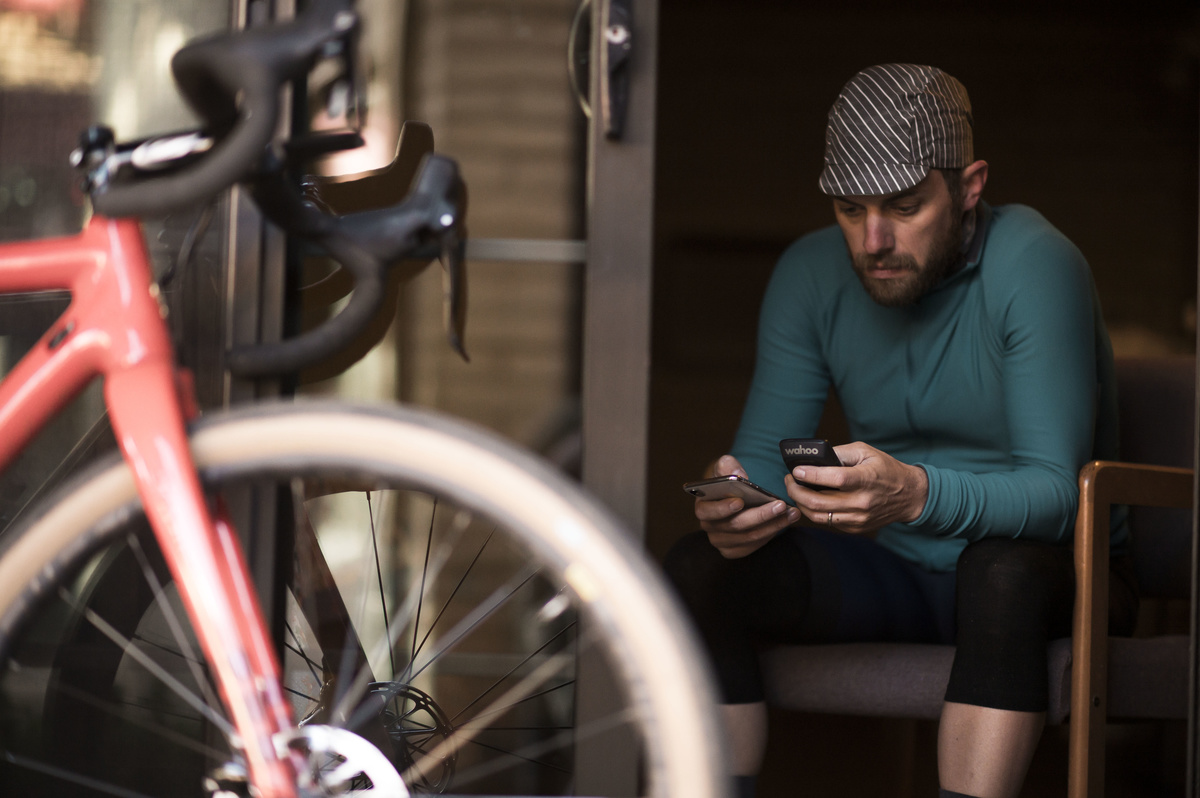
Replacing your wallet, your light switches, and your tv remote – it seems like smartphones can now do anything!
You can even use them in place of a bike computer, but is it a good idea?
Strapping your smartphone to a cheap mount on your bike will save you money upfront and give you access to more apps and features. But beyond these two perks, they can quickly crash and burn on an actual bike ride. Here are eleven ways that bike computers outperform cell phones.
Battery Life
Your phone is not designed to always have its screen on and its battery is not designed to support hours of GPS navigation. If you use it with these features, it will drain the power quickly, sometimes turning off halfway through your ride.
Screen Visibility
Most phone screens are designed for indoor use, so they are hard to see in bright sunlight. Bike computer screens, especially Wahoos, are made for the outdoors with high contrast screens that are much easier to read in bright sunny conditions.
Waterproofing
Many new cell phones are “waterproof,” but not all of them. You’re more likely to find your cell phone failing you on a long rainy ride. Even if your cell phone is waterproof, its touch screen won’t work well in wet conditions. Bike computers like Wahoo’s ELEMNT are made with buttons rather than a touchscreen, making them easier to use in wet conditions and keeping you from annoyingly changing your display with one errant touch. Don’t ride in the rain, consider what sweat can do to a phone.
Cold Weather Performance
Because phones are designed to operate at room temperatures, their batteries can drain in minutes if they are taken outside in cold weather. Bike computers are designed to handle the elements and preserve battery life in cold conditions.
GPS Reliability
Your phone isn’t thoroughly tested to perform as a bike computer and may have unreliable GPS reporting that at best is only accurate within 6 feet. Dedicated bike computers are able to reach accuracy down to 2 inches in ideal conditions. Bike computers get more accurate results by using onboard barometric altimeters, average speed calculation in real-time, and dedicated physical resources to receiving GPS signals from satellites. Phones compromise their accuracy by relying on third-party information for elevation, calculating their speed after the ride, and using their GPS detection resources that are also used for other purposes such as data transfer.
Aerodynamics
Phones are bigger and bulkier on your handlebars. Add in a bigger case and you’re adding drag to you ride and slowing yourself down. Bike computers like Wahoo’s Bolt were designed by aerodynamics experts to have as little drag as possible.
Durability
Your phone is a multipurpose tool designed to have a big screen which makes it less durable in a crash. Phones mounts haven’t been as extensively tested with all models of phones and they’re more likely to fail and send your device flying in a crash than a bike computer mount. Even without a catastrophe, phones are not designed to withstand the shocks of the road and are more likely to break than a dedicated bike computer.
Safety While Riding
Phones generate many more distractions with notifications from texts, calls, and apps. Bike computers are less likely to interrupt your ride and take your eyes off the road. Instead of hitting you with every notification from every background app, bike computers give you just the notifications you need, making your ride smoother, and safer.
Software Support
When you buy a bike computer, you gain access to a support team that provides you with updates that make your device work better. With a cell phone, you’re on your own trying to update the firmware and apps on your phone to make it better.
Hardware Integration
Bike computers are head units that are designed to work with a whole ecosystem of gear that also can include power sensors, bike trainers, and heart rate, monitors. Bike computers are more extensively tested within these systems and will work more reliably in them than cell phones.
Cost
Top-end cell phones are more expensive than top-end bike computers. Since phones are more likely to break in a crash, there’s more risk using them. Also, phone apps used to simulate the functions of a bike computer on a phone may cost you both one-time and subscription fees, cutting into any savings you have from not getting a dedicated bike computer.
When it comes to cycling, a phone is simply not the right tool for the job. Using a phone as a bike computer might work a couple of times, but as soon as you use it in less-than-ideal conditions, its shortcomings will become completely exposed. It may be a good idea to bring your phone along to make emergency calls, but if you want the best device on your handlebars, get a dedicated bike computer optimized for cyclists like Wahoo’s ROAM.


